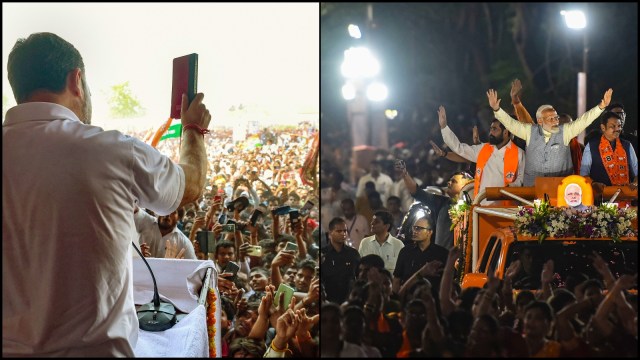
This writer covered Lok Sabha elections when they moved in “swing” and “waves”. From the Indira wave to the Janata wave and back to “Indira lao” and Rajiv’s “400 par”. Election coverage in those days was not so complex. You talk to a few party leaders and informed persons in the constituency and you could rightly capture the mood. “Janata has the upper hand in…” or “Odds even in…” — those were the cliche headlines.
In those innocent days, we went ahead without bothering about the noisy news channels and things like social media, fake news and fake videos and deepfakes. There were no paid “influencers”. Artificial Intelligence was confined to fiction. The new tribe of smart politicians were yet to emerge.
The 18th Lok Sabha election is really a game changer. When Gaya Lal of Haryana changed parties thrice in a week in 1967, it pricked the nation’s psyche and paved the way for the anti-defection law. No one now talks about the old law. Former Vice President Venkaiah Naidu laments about the recent rise in defections. But who cares? This time defections are an everyday occurrence and part of the winning strategy.
Over 50 per cent of Maharashtra candidates and one-fourth in Punjab are turncoats. The Indian Express found that two dozen of the sixth list of BJP candidates were “lateral entrants”. Clearly, the current elections have obliterated the defection stigma.
Sample the new style political diatribe from recent headlines — blunt, below-the-belt and rude: “Under them, even listening to Hanuman Charissa will be a crime”: PM. “Modi is poisonous snake”: Kharge.
Election time is a great leveller. “Yaddyacharti shretha…” (III.21) — Bhagavad Gita says that people follow what great men do. Narendra Modi was the one who made roadshows a major campaign tool. It is less expensive and does not need much preparation. Wherever he goes, he has a road show. Now all others, including Rahul and Priyanka, have made roadshows an essential part of their itinerary. Way back in 2015, the BJP introduced an elaborate booth management system. Now most other parties have followed it.
“Guarantee” is an entirely novel instrument crafted by Modi. It transcends government programmes and party manifestos. Sensing its success, the Congress and others have borrowed it and launched their own “guarantee cards”, which the Election Commission has frowned upon. Kejriwal too has come up with his own 10 guarantees.
Four decades ago, Indira Gandhi’s famed rudraksh and her hushed visits to Anandamayi Ma were topics of the capital’s drawing room gossip. Now, religiosity is the hallmark of political discourse. Forget the PM acting as chief priest at the Ram temple inauguration or Kejriwal launching his poll campaign after a ceremonial darshan at Hanuman mandir, even Rahul and Priyanka had to visit temples under the glare of publicity with the appropriate religious marks on their forehead.
In Madhya Pradesh, Kamal Nath organised a holy men’s conference right at the PCC office under the bhagwa flags and festoons. All these are signs of a great political compromise or sheer competitive communalism unthinkable in our time.
Look at the PM’s crusade against dynasty politics. However, every regional party in India has its own “shehzadas” and “shahanshas”, even within the Union government (think ministers Piyush Goyal and Anurag Thakur. All BJP allies, past and present, there are shahanshas and shehzadas. While in jail, Kejriwal nominated his wife as party coordinator over established leaders. Over the years, this has become the accepted norm. When the PM derides Rahul Gandhi or Abhishek Banerjee, his allies in states squirm. Hence, the shehzada jibe is fast losing its barb.
The Yaddyacharti syndrome has other blowbacks. If you use ED and CBI against our leaders, our police can drag Annamalai or Suvendu Adhikari to court. That is becoming the new norm. At senior levels, Karnataka police could summon BJP president J P Nadda. Often, this takes things to ugly levels with the National Women Commission under the Centre and Karnataka Women’s Commission taking diametrically opposite positions.
The our-police-your-ED equation has often been taken to the courts. Earlier this year, the Supreme Court issued notice to Tamil Nadu police on an ED request. There are similar clashes in many states. In West Bengal, the state police have produced startling evidence against the governor in an alleged molestation case all the while the Union home ministry maintaining stoic silence. Similarly, the partisan use of bureaucracy and watchdog bodies has touched dangerous levels.
The deep division has percolated to all walks of life. If the retired bureaucrats or judges issue a statement criticising the Centre, a rival group of pro-government groups counter it. A few weeks back, a group of advocates wrote to CJI to cleanse the system of “bench fixing”. Soon, another group of 600 advocates countered it to which even the PM lent support.
And it goes on.
Raman is a journalist and author of Tryst With Strong Leader Populism


